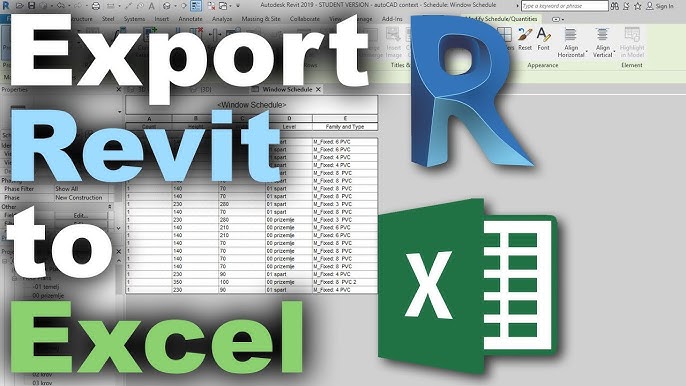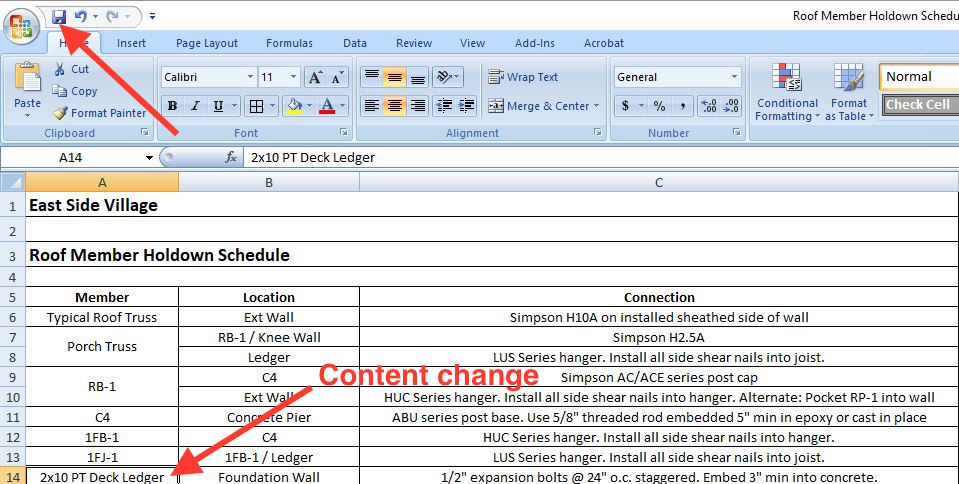Revit Add Ins: Supercharge Your Style and Modeling
Wiki Article
Revit Excel Assimilation Demystified: Streamlining Operations for Boosted Project Coordination
Are you tired of dealing with inefficient job control and lengthy operations? Look no additionally, due to the fact that Revit Excel Assimilation is below to demystify the procedure and improve your jobs. With this effective tool, you can enhance project coordination and get rid of the problem of hands-on information entry. In this article, we will certainly lead you through the value of Revit Excel Combination, reveal you exactly how to enhance workflows, and supply ideal practices for successful integration. Prepare to transform your job coordination easily.The Significance of Revit Excel Assimilation
You need to recognize the importance of Revit Excel assimilation to properly enhance your process and boost job sychronisation. The integration of Revit, a powerful structure details modeling (BIM) software application, with Excel, a commonly utilized spreadsheet program, supplies numerous benefits for engineers, designers, and building experts.

By integrating Revit with Excel, you can get rid of hands-on data entry and decrease the risk of errors. This not only conserves time but additionally makes certain precision in your project paperwork. You can upgrade data in Excel, and it will automatically update in Revit, preserving uniformity throughout your job.
Additionally, Revit Excel integration enhances job control by enabling reliable collaboration among employee. With information synchronized between Revit and Excel, everybody can access one of the most updated info and interact seamlessly. This advertises smoother communication, lowers disputes, and boosts total project efficiency.
Exactly How to Streamline Workflows With Revit Excel Combination
Optimize your process by flawlessly connecting Revit and Excel to streamline your workflow. By integrating these two effective tools, you can boost task control and improve effectiveness in your job. With Revit Excel combination, you can conveniently transfer information in between the 2 platforms, enabling seamless interaction and collaboration.

An additional advantage of Revit Excel integration is the capability to develop customized reports and evaluate information better. With Excel's robust features, you can carry out advanced computations, produce charts and charts, and produce extensive reports based upon the information from your Revit models. This permits you to get valuable insights and make notified choices throughout the job.
Enhancing Job Sychronisation With Revit Excel Combination
By perfectly connecting your design software with powerful information evaluation tools, you can substantially boost the control of your projects. Revit Excel integration enables you to streamline your workflows and enhance project sychronisation by eliminating hands-on data entrance and minimizing errors. With this assimilation, you can easily move information in between Revit and Excel, making certain that all job info is up to day and exact.Among the key benefits of Revit Excel assimilation is the ability to import and export information between the 2 software application perfectly. This means that you can easily import existing job data from Excel into Revit, saving you time and effort in re-entering information. You can export job information from Revit to Excel, permitting you to do innovative analysis and estimations using the effective functions of Excel.
Moreover, Revit Excel integration allows you to develop dynamic links in between the two software application (import excel into revit). This suggests that any type of adjustments made in Revit will instantly upgrade in Excel, and the other way around. This makes sure that all job stakeholders are collaborating with the most up-to-date information, improving task coordination and lowering the threat of mistakes
Conquering Difficulties in Revit Excel Combination
When getting over difficulties in the combination of Revit and Excel, it's vital to make sure smooth data transfer and reduce errors. One usual obstacle is the compatibility of read this article information layouts in between Revit and Excel. To tackle this, you can utilize plugins or add-ins that help with the conversion of data from one layout to another. These devices help keep the stability of the data during the transfer process.One more challenge is the absence of synchronization in between Revit and Excel. It's important to establish a clear operations that ensures both systems are upgraded in real-time. This can be achieved by using cloud-based collaboration tools or developing a system for regular data syncing.
Managing big datasets can likewise be troublesome. When it comes to taking care of large quantities of data, revit and Excel have various abilities. To overcome this challenge, you can split the information into smaller sized, manageable pieces or utilize information filtering strategies to concentrate on certain areas of interest.
Finally, human mistake can bring about disparities in between Revit and Excel data. It is very important to educate staff member on the assimilation process and develop quality assurance steps to catch any errors. Routine audits and cross-checks can help recognize and remedy any kind of variances.
Best Practices for Effective Revit Excel Combination
To guarantee effective assimilation of Revit and Excel, it's crucial to adhere to some ideal techniques that will assist improve your operations and reduce mistakes. In addition, when connecting Excel data right into Revit, ensure that the data is cost-free and clean from any formatting issues that could cause errors.One more essential method is to on a regular basis update your Excel information in Revit. This can be quickly attained by establishing a clear process for upgrading the connected information. Make it a routine to review and update the data at normal intervals, especially when changes are made to the job. This will certainly help maintain your data accurate and up to day.

Verdict
So, there you have it - revit linked here Excel combination doesn't need to be a complicated job. By improving your process with this effective combination, you can enhance job sychronisation and accomplish greater efficiency. Remember to conquer any challenges that may develop and comply with best methods for successful combination. With revit Excel integration debunked, you'll be well on your way to optimizing the capacity of these devices and taking your tasks to new elevations.You can export your Revit routines to Excel, make changes or updates in Excel, and then import the updated data back into Revit with simply a couple of clicks. Revit Excel integration permits you to improve your process and boost task sychronisation by removing hands-on data access and reducing errors. With this assimilation, you can easily transfer data in between Revit and Excel, making certain that all project info is up to date and precise.
You can export dig this job information from Revit to Excel, enabling you to execute advanced analysis and calculations making use of the powerful attributes of Excel.
In addition, when connecting Excel information right into Revit, make sure that the data is free and clean from any type of formatting problems that can trigger errors.
Report this wiki page